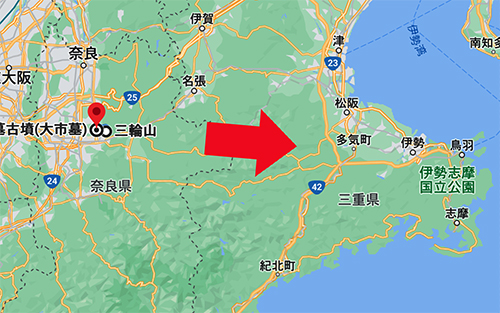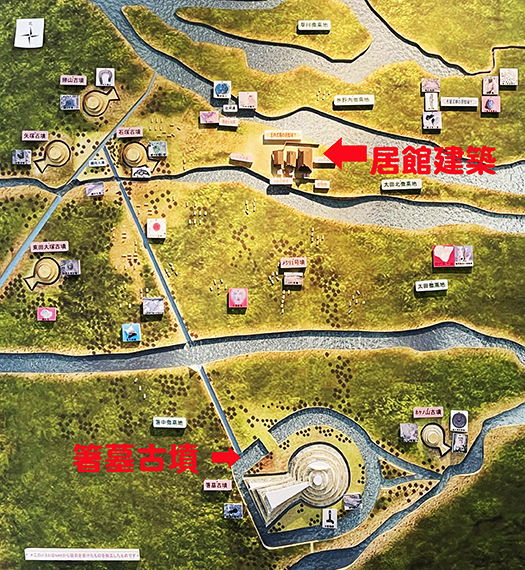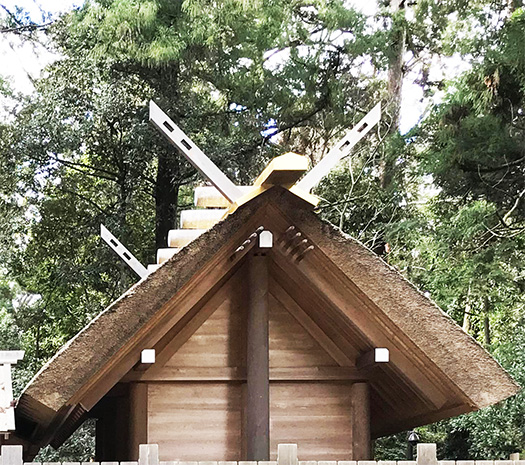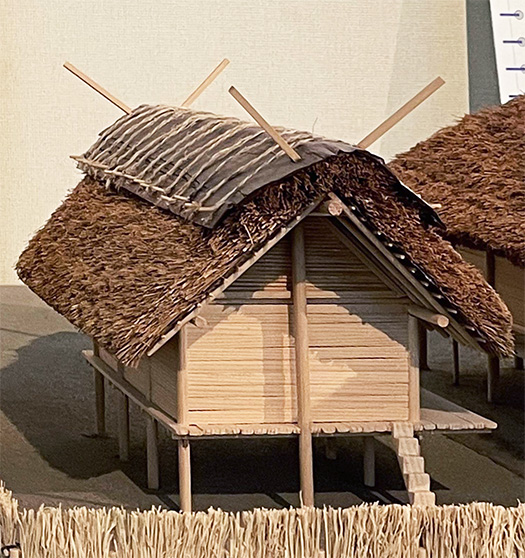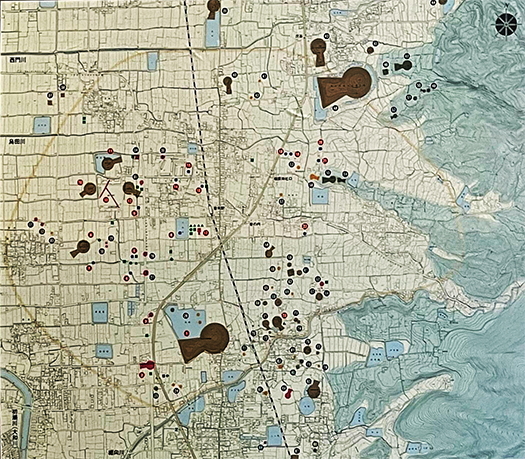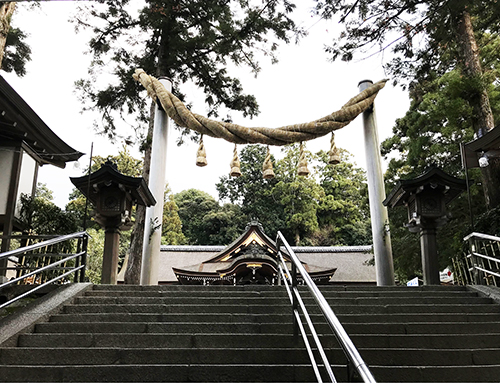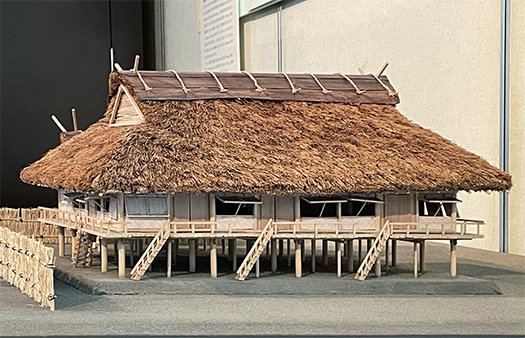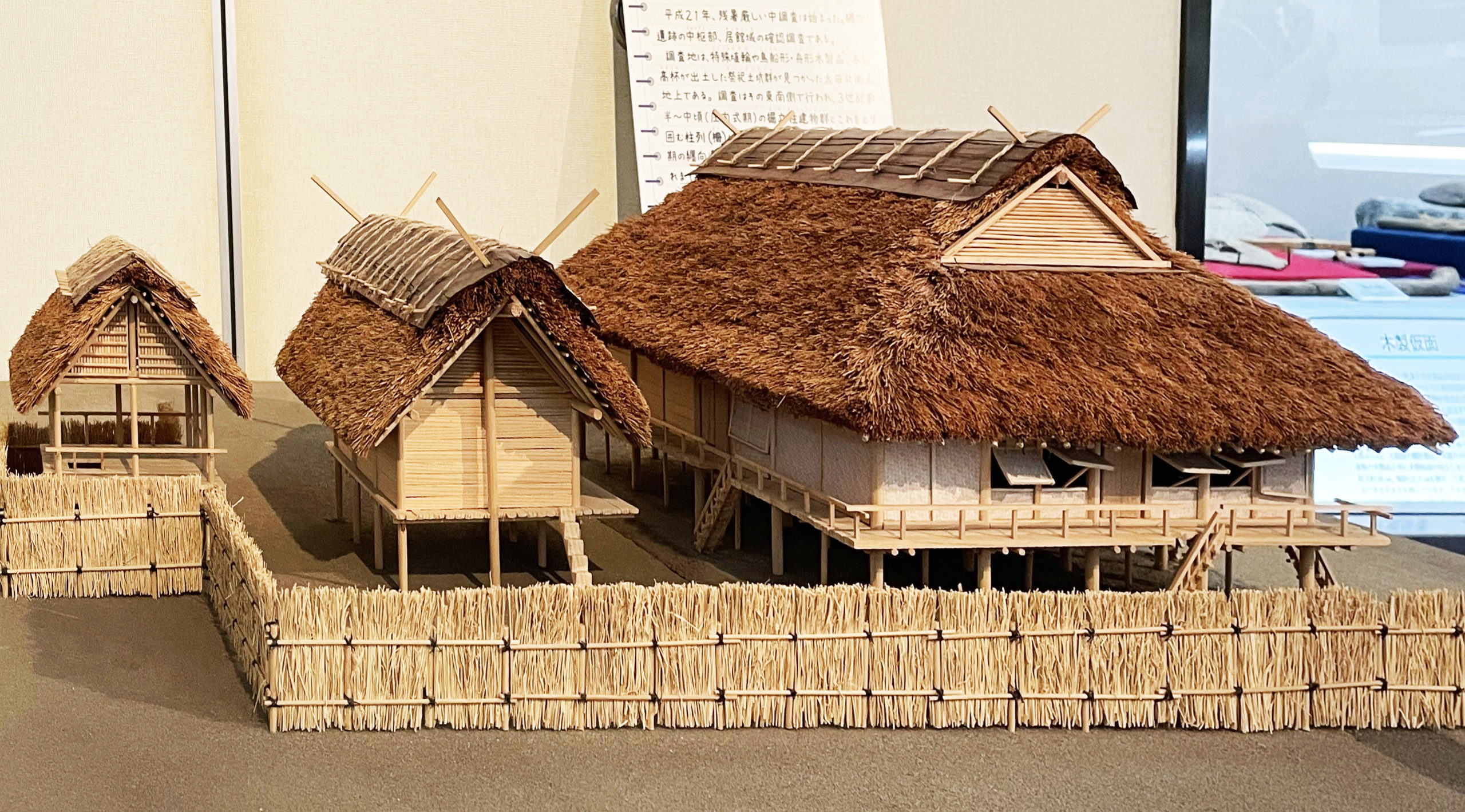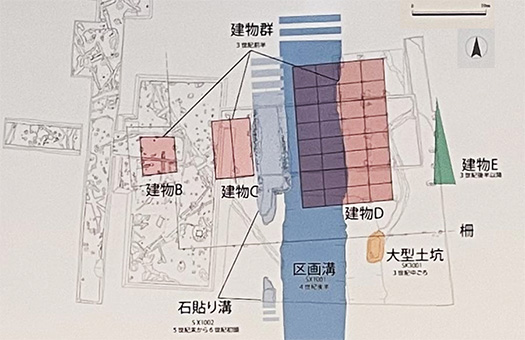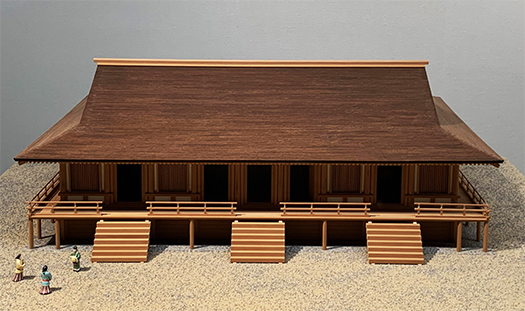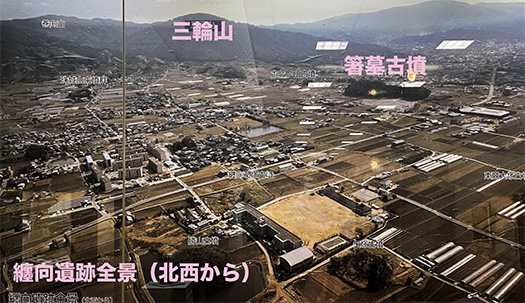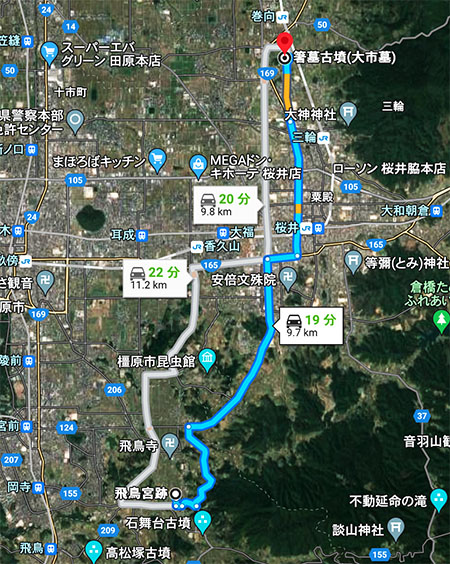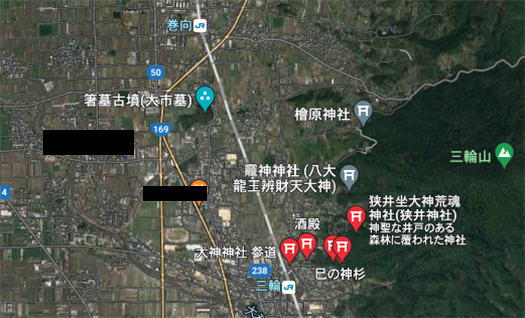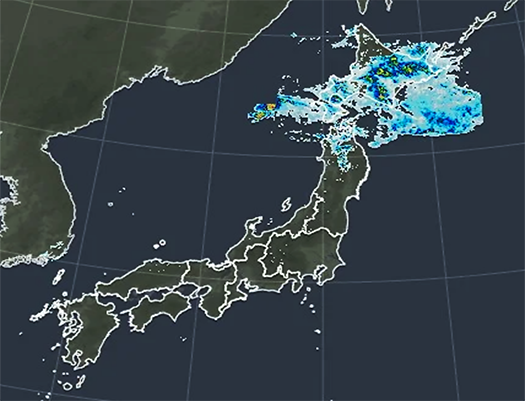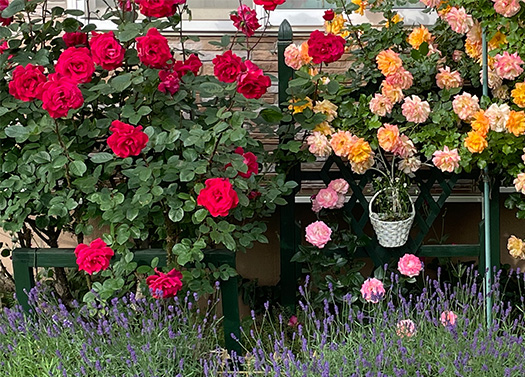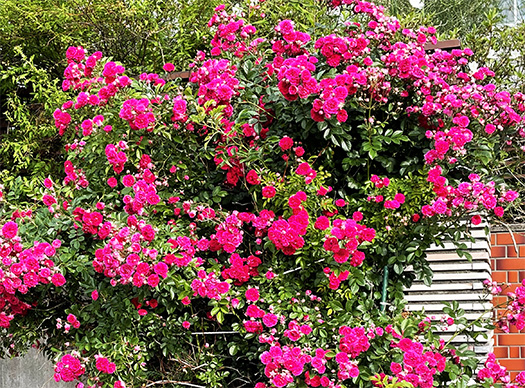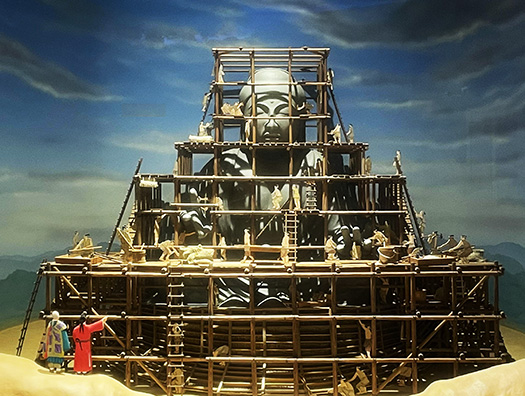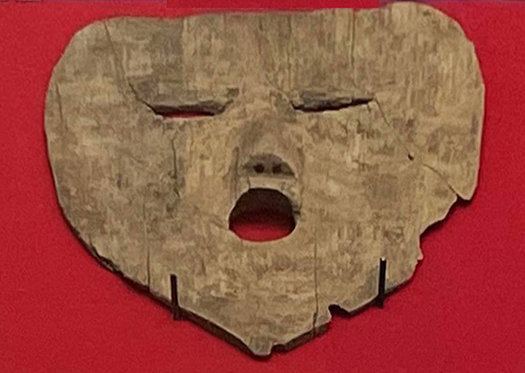

奈良県北東部、奈良盆地の東裾・纏向遺跡出土の遺物。
日本の王権根拠地として「マツリ」の状況をうかがえる出土品がある。
そのなかで強く興味を惹かれたのがこの木製仮面。
似たような仮面は北海道の遺跡でも発掘されているので、
始原的な「文化」のありようとして普遍性があるものと思える。
ここではその製造過程までが推量可能な解明がされていた。
以下、桜井市立埋蔵文化財センター展示説明文より要旨抜粋。
〜纏向遺跡の(王権建築と見なされる)居館域周辺の北西側に
「辻河道」と呼ばれる旧河道跡が見つかっている。<河道とは流水が流れ下る部分。
通常は堤防又は河岸と河床で囲まれた部分を言う>この南側岸では
多くの祭祀土杭<祭祀用具を埋めた穴>が集中して確認された。
これらの土杭はいずれも湧水点まで深く掘り下げられていることや、
穴の中には土器の他、多様な木製品や種子が多量に投棄されている特徴がある。
また木製品には焼け焦げたものも多く含まれていることから、
「水と火を用いた祭祀が行われていた」ものと考えられている。
そのなかに国内最古の「木製仮面」があった。・・・
纏向遺跡ではこれまでに数多くの木製品が出土していますが、
建築部材や農具など実用的なものの他、祭祀的意味合いのものも含まれる。
そのなかで3世紀前半期とされる土杭から土器類や籠状製品、朱塗りの楯破片、
鎌の柄などとともにこれが出土した。
この木製仮面は長さ26cm、幅約21.5cmでちょうど人間の顔を覆う大きさ。
赤樫類の木製で、以前は広鍬(クワ)を転用して作られたもの。
(説明図面参照のこと)口の部分はクワの柄の穴をそのままに利用。
両目の部分はあらたに穴を開けていて、高く削り残した鼻の部分には
鼻腔の表現も見られている。またまゆ毛は線刻で表現され、その周辺には
わずかに赤色顔料が付着していました。
紐を通す穴などは見られず、手に持って使用したと推測できる。
祭祀の象徴的な道具として素性があきらかに農具のクワを転用ということから
祭祀自体が農業に深く関わるものであった可能性がある。〜
なにか深く感動させられるものがある(笑)・・・。
祭祀にあたって仮面をかぶって人間が動作するというのは、
後の世にも「仮面劇」というような文化形式が生まれてくる。
仮面劇は中国から伝承してきたとされるけれど、
東アジア一帯で、このような祭祀儀礼が普遍的だったのだろうか。
この仮面を着けてなにかに憑依したように舞う所作は
たぶんそれを見物する一般大衆にも深い同意と理解が通じただろう。
「おお、ありゃあ、こないだまで使っていた鍬じゃねえか(笑)」
という憑依劇シーンが容易に想像できる。
たぶん爆笑するようなシーンだったのではないか。
どうもわたしには「演劇文化」の初源のような想像が湧いてくる。
神的な憑依のまま自由闊達に「舞台」空間を踊り回る妄想が止まらない。
English version⬇
Masks in Japanese Society 1,800 Years Ago: Yamato Historical Testimony-15
A symbol of agriculture, an ingenious mask was created by converting an oak stag beetle. Possessed by these masks, the Hatsugen “theater” rushed across the stage space at the foot of Miwa Mountain. Theatrical performance…
Artifacts excavated from the Mato Mukai site at the eastern foot of the Nara Basin in northeastern Nara Prefecture.
Some of the excavated artifacts suggest the situation of “MATSUMATAI” as the basis of Japanese kingship.
Among them, this wooden mask attracted my strong interest.
Similar masks have been excavated at ruins in Hokkaido.
It seems to have universality as a form of primitive “culture”.
Here, even the manufacturing process of the masks has been elucidated.
The following is a summary excerpt from the explanation of the exhibition at the Sakurai Municipal Center for Archaeological and Cultural Properties.
〜On the northwest side of the area around the residence area of the Momamukai site (considered to be a royal building), there is a road called “Tsuji Kawamichi.
The remains of an old river channel called “Tsuji River Road” was found on the northwest side of the area around the residence area of the ~Momamukai site (considered to be a royal building). <A river channel is the part of a river where the water flows down.
Usually, it refers to the area enclosed by a levee or riverbank and the riverbed.
On the south bank of the river, a large number of ritual piles (holes in which ritual implements were buried) were found concentrated.
All of these piles were dug deep down to the water surface, and the holes were filled with earthenware and other diverse artifacts.
In addition to earthenware, a variety of wood products and seeds were dumped into the pits in large quantities.
The fact that many of the wooden artifacts were burnt and charred suggests the possibility of a ritual using water and fire.
The wooden objects are thought to have been used in rituals that used water and fire.
Among them was the oldest wooden mask in Japan. The Mukai site has been the site of many rituals and ceremonies.
Numerous wooden artifacts have been excavated at the Miamukai site.
In addition to practical items such as building components and farming tools, the site also contains items of ritual significance.
Among them, earthenware, basket-like products, vermilion-lacquered shield fragments, and a sickle handle were excavated from a clay pile dated to the first half of the 3rd century.
The wooden mask was excavated from a clay pile dated to the first half of the 3rd century.
This wooden mask is 26 cm long and 21.5 cm wide, just large enough to cover a human face.
It is made of red oak, and was formerly made by converting a broad hoe (see drawing).
(The mouth is made from a hole in the handle of a mulberry tree.
The eyes were drilled with new holes, and the nose, which was left high and hollow, has an expression of a nasal cavity.
The nose, which has been left high and uncut, also shows the nasal cavity. The eyebrows were carved in lines, and the area around the eyebrows was slightly covered with red pigment.
slight red pigment was adhered to the area around them.
There were no holes for strings, and it can be assumed that the object was used by holding it in the hand.
The fact that it is a symbolic tool used in rituals, and that it is clearly a conversion of a farming implement, suggests that the ritual itself is deeply related to agriculture.
It is possible that the ritual itself was deeply related to agriculture. 〜The fact that the ritual itself may have been deeply related to agriculture.
There is something deeply moving about this (laughs)….
The fact that people wore masks and performed rituals is a sign of the “masked drama” that would come to be known in later times.
In later generations, a cultural form called “masked drama” was born.
Masked theater is said to have come from China.
I wonder if such rituals were universal throughout East Asia.
The masked dancers wear masks and dance as if they are possessed by something.
The way they wore masks and danced as if they were possessed by something would probably have been deeply agreed upon and understood by the general public who witnessed the ritual.
The scene of the possession drama would have been like this: “Oh, isn’t that the hoe we used to use until the other day?
(laugh)” It is easy to imagine a scene of a possession play.
It was probably a laugh-out-loud kind of scene.
I can imagine the origin of “theater culture.
I can’t stop imagining myself dancing around the “stage” space freely and energetically with a divine possession.
Posted on 7月 7th, 2022 by 三木 奎吾
Filed under: 日本社会・文化研究, 歴史探訪 | No Comments »



